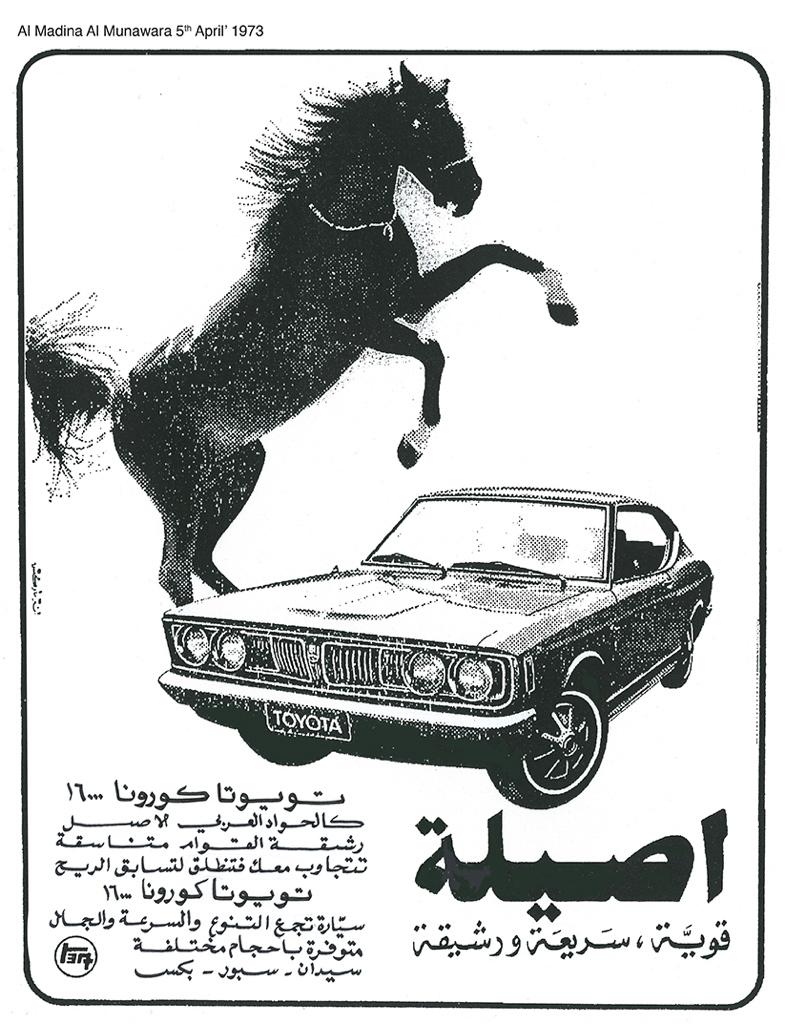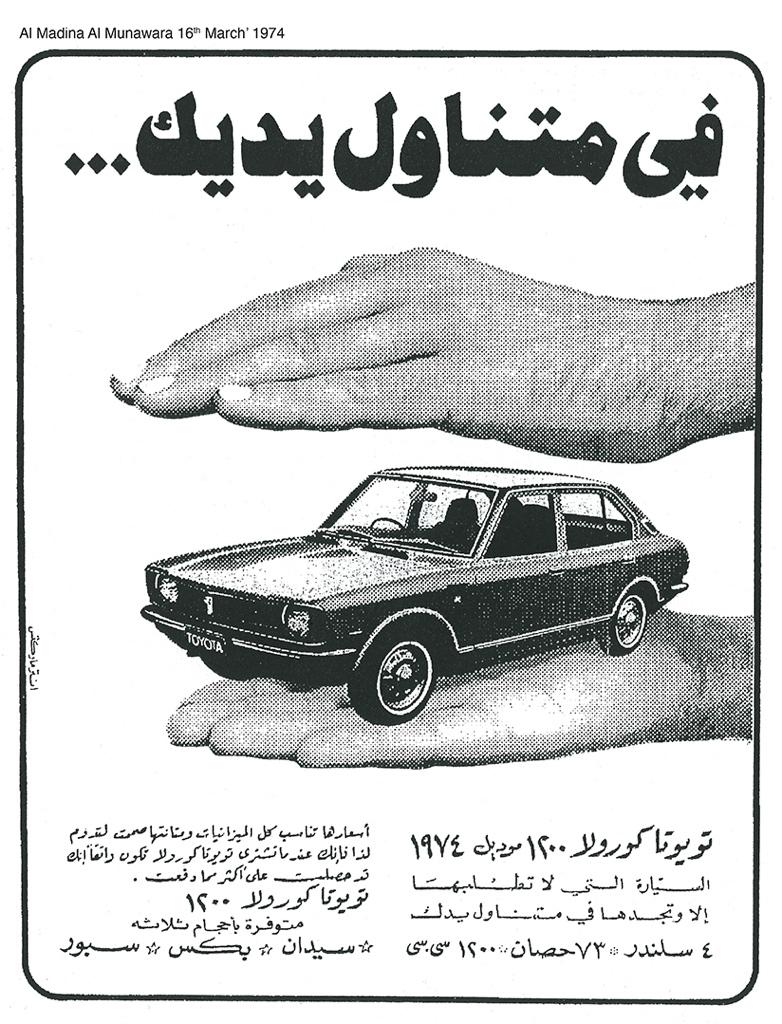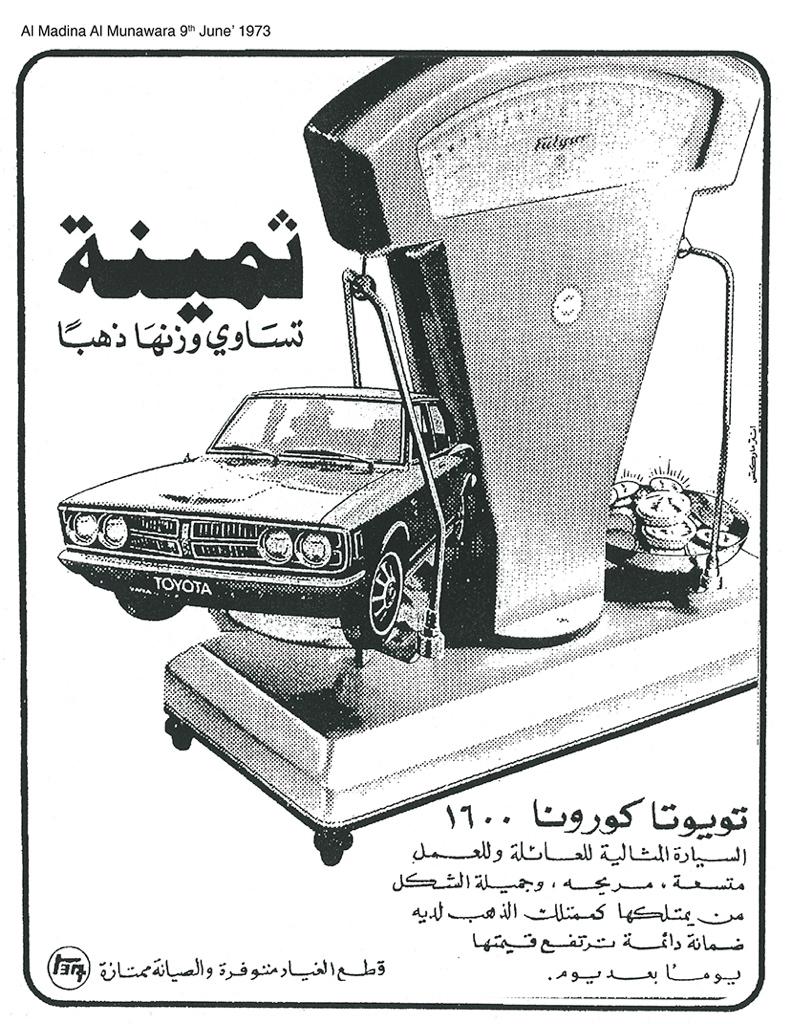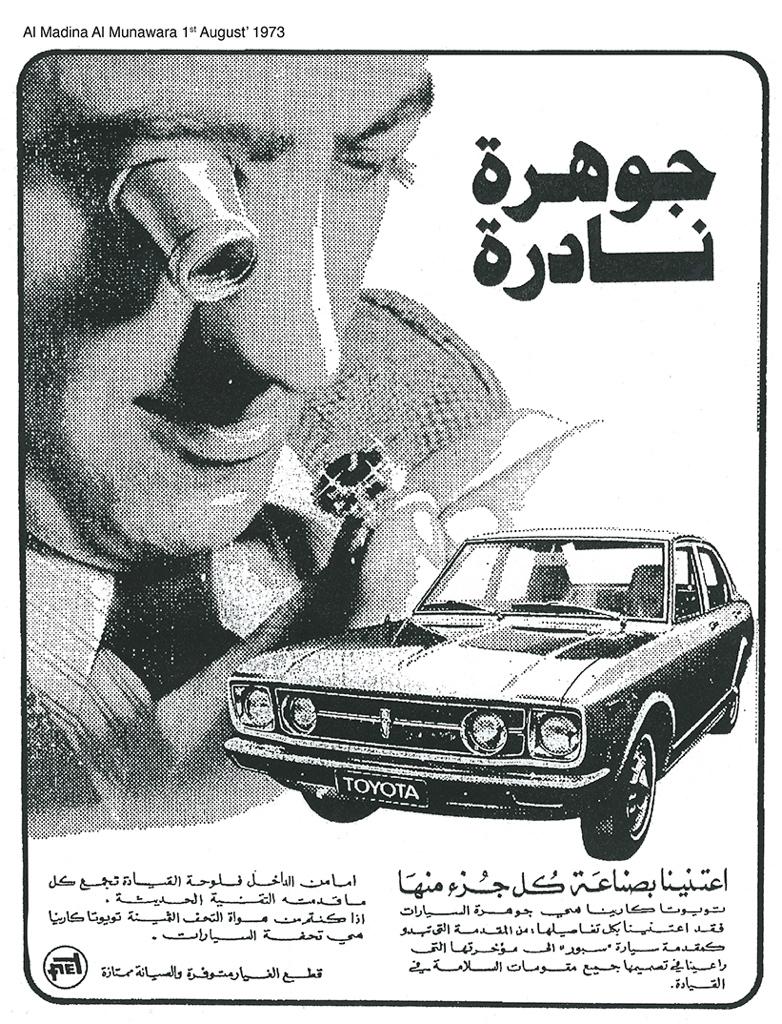On one of my visits to Jeddah, I had to stay over the weekend as we had planned meetings with the local media that could not be held prior to my return to Lebanon. At that time, I had started booking my hotel without relying on the temperamental attitude and preferences of clients. I was booked at the Jeddah Palace Hotel, and on that visit, I discovered how boring life could be when you are alone in Saudi Arabia on a weekend. I stayed in bed much later than I normally did, then went down to the football field-sized lobby and spent more than an hour reading the many daily newspapers that were spread on the table at the center of the guest lounge. To my surprise, I discovered that all five leading newspapers carried the same photos and stories across the entire paper. On inquiring, I found out that this was the case since Saudi newspapers during the Seventies were only allowed to reproduce news that was released by the Saudi Press Agency (SPA). Later, SPA’s role was slightly relaxed when it was revealed that its new role was to provide guidance on what should be published rather than dictating the exact words. The only area of difference – as was pointed to me later – was the sports page, as each of the newspapers backed one of the national football teams.
After the mid-day prayer, two young gentlemen in Saudi national dress walked into the lounge and sat in the corner opposite me. They were engaged in what seemed to be a lively chat, which was only interrupted by each one looking at his wristwatch every now and then. As I was extremely bored, sitting in this spacious lobby on my own, with no one to talk to, I walked towards them, greeted them, and introduced myself. As expected, they reciprocated my greetings in their typically warm style and invited me to join their corner of the lounge. Before sitting down, the two gentlemen introduced themselves as Youssef Abdel Latif Jameel and Shaker Naboulsi. The moment I mentioned that I was in advertising with Intermarkets and I was in Jeddah to meet with the Mahmoud Saleh Abbar Company, they both showed an expression of surprise that was instantly explained. Shaker said that this could only be a very strange coincidence, as before I had walked towards them, they had agreed to call Abbar the next morning to acquire the contact of the advertising agency that had designed the ‘Warm world takes shelter with Westinghouse’ campaign. Abdel Latif Jameel was reviewing its Toyota advertising arrangement and was very much impressed with Westinghouse’s recent campaign. At that stage, Youssef Jameel picked up the conversation to tell me that Abdel Latif Jameel was the national sales company of Toyota in Saudi Arabia. A market that had traditionally been an American car market, its own aggressive marketing efforts had made inroads for Japanese cars. While telling me this, Youssef complimented the efforts of his marketing vice-president, the Jordanian Shaker Naboulsi, who had been leading this onslaught. Youssef introduced himself as the eldest son of Sheikh Abdel Latif Jameel and the current president of the company. His father had started a gradual retirement process, spending most of his time in Beirut.
Abdel Latif Jameel was selling around 40,000 vehicles in the Kingdom, led by the boxed Land Cruiser. However, as the product line-up had been extended, Youssef and Shaker were on the lookout for an advertising agency to help them double their sales. From total boredom to a complete submergence in a dynamic dialogue about advertising in the Kingdom, Intermarkets’ history, and experience. This is how the afternoon raced by, until the time of evening prayer. We shook hands and parted on the understanding that I would be extending my stay in Jeddah to visit the Toyota showroom and collect my first brief.
When Saleh Balahwal came to pick me up the next day for the media tour, I told him about my previous day’s meeting with the Toyota people. Saleh was elated to hear that his Westinghouse campaign was creating such a positive vibe in the market. He encouraged me to try my best to win the Abdel Latif Jameel business since this company was setting standards in introducing a new marketing spirit in a traditional family business environment.
Our media tour took us to Okaz, Al Bilad, Al Yaoum and Al Nadwa, as the other newspapers were based in Riyadh and Al Khobar. Westinghouse had developed into a major spender thanks to the media plans that I continued to prepare after the media survey incident. Saleh Balahwal, on the other hand, was quickly approving the plans because he could see the sales results every time, we launched a new product. This is why we received very warm receptions, even from publishers and editors, who were all very complimentary of the ads that they loved, remembered and which had become the subject of their everyday chats. For me, it was great to be introduced to the leading Saudi media in this way and to be associated with an interesting success story on my first visit.
Our briefing session at Abdel Latif Jameel’s head office was as stimulating as the surprise encounter with Youssef and Shaker the previous day. They sent one of their cars to pick me up from the hotel and Shaker was waiting impatiently for my arrival. He took me on a quick tour that started at Youssef Jameel’s spacious but humble office, where many people were sitting around the same room, as is the custom in Saudi Arabia. I was introduced and had to shake hands with all those present and later I came to realize that this seemingly boring ritual is a golden opportunity for new business networking. Then Shaker and I retired to his office, where he called his two young Saudi assistants to join our meeting. Shaker’s background brief had its starting point in the very early days when Abdel Latif Jameel began his operations at a gas station in Jeddah in 1945. That year, he ordered only four units of the Toyota BJ, which proved to be very popular. In later years, this model developed into the box-shaped Toyota Land Cruiser. Abdel Latif Jameel was named Toyota’s sole distributor in Saudi Arabia in 1955.
Through its partnership with Abdel Latif Jameel, Toyota became one of the most popular automobile brands in the Kingdom, with market share reaching as high as 40 per cent. But Youssef and Shaker were concerned that Toyota was gaining an image of only selling cars for rough terrain, at a time when they had started ordering new family models and luxurious sedans. Shaker’s assistants stepped in and loaded me with catalogues of all the new models that were en route to the Kingdom and gave me detailed charts that showed units ordered, colors and delivery dates. Shaker concluded by saying: “Now we leave you to go back to base, but we expect you to return soon and bring along a campaign for Toyota that people will remember even more than the “Thirsty World” campaign that you launched for Westinghouse.”
Although these were the pre-direct dialing phone days, the news about my Toyota jackpot seemed to have reached the agency in Beirut before I walked into the office on Thursday morning. The fact that I had contacted Raymond Hanna to seek permission to extend my Jeddah stay was immediately circulated by Hilda Jabbour via the Intermarkets ladies’ powder room gossip mill. I was received as a hero and was immediately whisked to a de-briefing session with Raymond and Nahi that was quickly joined by Erwin Guerrovich, Samir Fares and Gabriel Brenas. It seemed as if everyone in the room realized the importance of what had happened in Jeddah earlier that week, so our meeting quickly concluded, and we all rushed back to our desks to embark on what I have always felt to be my most exciting week of 1973.
I had brought along with me many copies of the various Saudi newspapers to show our creative and studio people in Lebanon, the boring creative standards, the poor design level, and the primitive standards of typography, despite the wealth of opportunities allowed by Arabic calligraphy. Nahi Ghorayeb stepped in to help in developing the brief for this first Toyota campaign out of Intermarkets. Raymond Hanna led a team of Arabic language calligraphers to choose a distinct font for Abdel Latif Jameel’s Toyota. While Gabriel Brenas initiated a search amongst his European colleagues to identify a printing and design technique that could make use of special screens to overcome the poor letterpress reproduction standards of Saudi daily newspapers. We were all keen to make the best use of this opportunity, so we reconvened in 48 hours to review the results.
Gabriel Brenas excitedly introduced a design process that was used in England, called the “Scharff Line Design Technique”, which made use of layered screens in the preparation of printing blocks to deliver superior reproduction quality and was not affected by the quality of paper or the age of the printing presses. Brenas assured us that he had consulted with Leo gravure – the block makers who were also located in Homsi building – and could confidently guarantee a superior quality for the Toyota ads in comparison to the prevailing standard of ads in Saudi newspapers. Raymond Hanna walked around the meeting room as he shared the news about his meeting with Salim El Lawzi, the publisher and editor-in-chief of Al Hawadeth magazine, who had agreed allowing us to use his magazine’s proprietary font for the headlines of our Toyota ads in Saudi Arabia. El Lawzi had re-launched his magazine with a new look when they moved into their new building in Chiyah. One of the main assets of this new look was the bold revolutionary font that was designed especially for them by London-based Arabic calligrapher, Mourad Boutros. Al Hawadeth had become the most popular pan-Arab weekly and, accordingly, its fonts were changing Arab youth’s tastes towards visual aesthetics. Then Nahi and I took our turn to share the creative brief, which was pegged to a simplistic recipe. A short (ideally one-word headline = an adjective that could define the car) on top of the ad, using the Al Hawadeth font. A visual to bring alive this adjective treated in Scharff Line Design Technique, with the car model underneath and a few bullet points introducing the main features of the car. This was then topped off with an Abdel Latif Jameel logo that our design studio had started to work on, to be used as a signature in the bottom left-hand corner of our ads.
Quickly we prepared a series of layouts to demonstrate the campaign dynamics, which I carried back to Jeddah, only to be received with a standing ovation from Youssef, Shaker, and the entire marketing team. After the presentation, Shaker called me to his room where he insisted on fine-tuning some of the headlines that I agreed to instantly, as it added a well-informed and very practical dimension to the campaign. In the same meeting I received an instant approval for the media plans that we had taken the initiative of preparing to demonstrate that we were a proactive agency and to pre-empt any further search for a new agency. As if having read our minds, Shaker immediately announced a new brief that he wanted to share with Intermarkets, and for which he had invited his assistants to join. Abdel Latif Jameel had placed its first order for Toyota’s luxury sedan, the Cressida, and throughout this briefing session the client kept on reminding me that the Cressida would have to attract a new type of buyer to their showrooms.
I flew back to Beirut and went into another quickly assembled brainstorming session. Within less than 10 days we had a new game-changing campaign that I carried back to Jeddah. The marketing team in the room had grown in number. Members of this department who had seen our new ads in the local newspapers, loved them and had to boastfully answer questions about it from family members, friends and clients. I waited for all these people to settle around the large conference table, then I placed a copy of Okaz in the middle so all of them could see the small ad that we had stuck on the front page showing a four-leafed ivy flower, the symbol of good luck, next to the headline “Car of Happiness”. Then next to Okaz, I placed a copy of Al Bilad carrying a similar ad, and a murmur was heard around the table. Then I placed a copy of Al Nadwa, and the fourth was Al Madina, explaining that for a week before the launch, readers of all Saudi dailies would, every morning, see this teaser ad. Then, while driving around, they would see the same message on the windows of the Toyota showrooms all over the Kingdom and enough buzz would be created in preparation for launch day.
I placed another newspaper on the table and flipped the page to reveal a full-page ad showing the new Cressida treated by the Scharff Line Design Technique to bring alive the beauty of its design and its spaciousness, under the headline “Car of Happiness” next to the ivy flower. Underneath the picture, the model’s name was introduced in bold across the entire space. Under all of that, we placed a piece of copy unlike anything Saudi readers had seen before. The copy narrated the story of a Cressida owner who says that the moment he wakes up and looks out of his window, he sees “happiness” parked in front of his house. His kids see him off to work riding on a wave of “happiness” and when he drives back home in the evening, he soaks himself in “happiness” in preparation of him being with his family again. I continued to say that all showrooms will be decorated with “Car of Happiness” banners, streamers and giant stickers adorning the showroom windows. Every Cressida sold would carry a “Car of Happiness” sticker on its windshield.
The “Car of Happiness” campaign contributed greatly to the popular image of Abdel Latif Jameel. It helped in selling the entire first order of Cressidas in record time and cemented a new and very close partnership between Shaker Naboulsi and myself, who kept saying: “Together, we are writing a new page in Saudi advertising history.”



